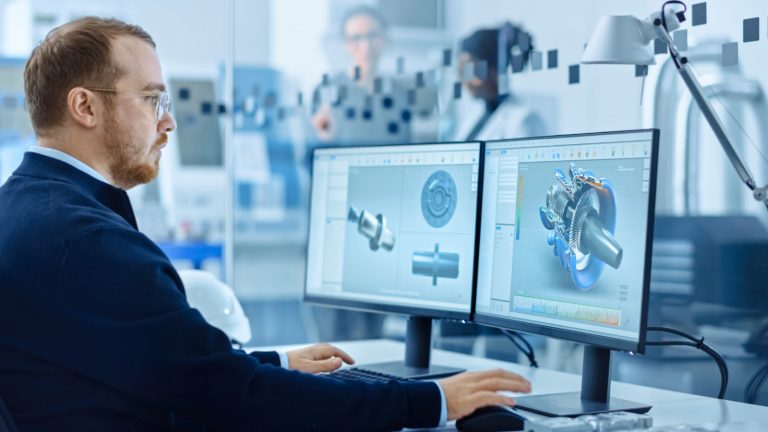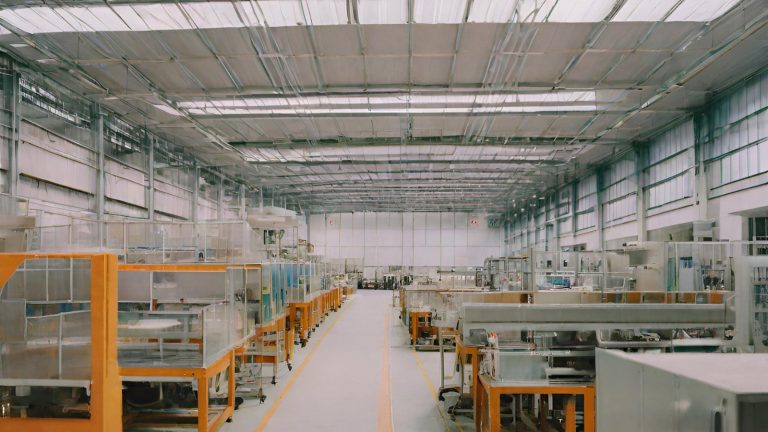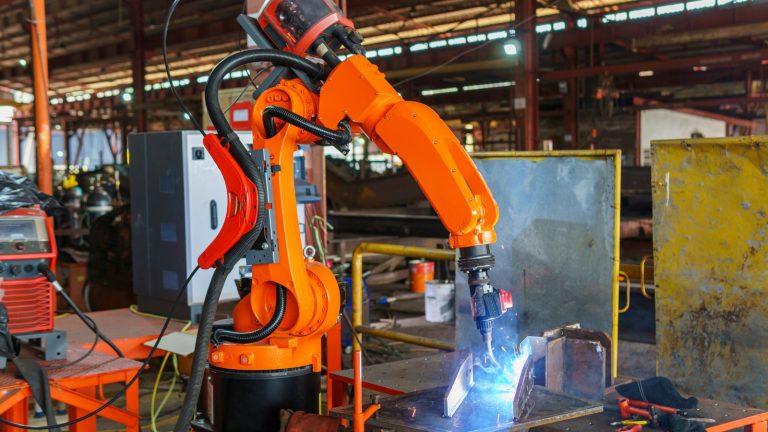You know that manufacturing is an industry where Singapore has played its game outstandingly for decades now. Every year, this country walks down the path of manufacturing excellence with new sorts of innovations, technologies, and revolutions. However, considering the weight of competitiveness they receive from the global manufacturing realm and their Asian rivals, Singapore has decided to revamp the manufacturing ecosystem with experiments and new strategies targeting the year 2030.
In this article, we explore how Singapore is preparing for the 2030 manufacturing boost through the paths of experiments, perfection, and resilience.
Why is 2030 Special for Manufacturing Singapore?

In this section, we will look into the circumstances that led Singapore to consider reshaping the manufacturing sector all of a sudden. According to the reports, Singapore has plans to boost its manufacturing sector’s contribution to $160 billion by 2030. The current territory stood at $130billion.
Singapore said in 2021 that it intended to increase the manufacturing sector by 50% by 2030 as part of its Economy 2030 plan. The goal was to achieve both quantitative growth and a ‘qualitative transformation’, with a stronger focus on advanced manufacturing.
This is highly important on a global scale, as 17% of the world’s output comes from the manufacturing industry.
When it comes to this boost in manufacturing in Singapore, the government has decided to enhance three key areas. The first category is innovation for performance, which is vital in reinforcing supply chain resilience through efficiency and connectivity. Smarter and more connected manufacturing will lower risks and open up new economic opportunities in politically unreliable and chaotic times, especially in Asia.
The second area is manufacturing sustainability. The Singapore Green Plan 2030, which details Singapore’s manufacturing sustainability initiatives, places a strong emphasis on reducing carbon emissions, increasing efficiency, and promoting more circularity. The development of creative solutions, such as a circular economy for used electric vehicle batteries, is a step towards net-zero production.
The third area is thriving Industry 4.0 in the manufacturing sector to find manufacturing excellence. This not only emphasises the development of Industry 4.0 technologies but also trains a skilled workforce to work with such advanced technology.
What is the Singapore Manufacturing 2030 Strategy?

More Focus on Advanced Electronics Manufacturing and Innovation
Singapore’s shift towards advanced electronics manufacturing and innovation presents a compelling strategy for boosting its manufacturing sector by 2030.
With this strategy to prioritise advancements in electronics manufacturing, Singapore can extract the best of it and build a strong technological infrastructure and skilled workforce to drive innovation and competitiveness in the global market.
With this emphasis, Singapore is able to make use of cutting-edge technology like robots, artificial intelligence, and the Internet of Things, creating an atmosphere that is favourable for research and manufacturing development.
Furthermore, making investments in the production of modern electronics boosts manufacturing sustainability, productivity, and efficiency, ensuring Singapore’s dominance in the world’s manufacturing sector.
Adopting this approach helps Singapore achieve its goals of a prosperous and sustainable future by diversifying its economy, generating high-value employment, and maintaining long-term development in the manufacturing sector.
Plan for Green Growth
We know that Singapore is highly enthusiastic about manufacturing and sustainability. However, in the 2030 green plan, this aspect has received much attention. It seems that Singapore predicts they can reduce environmental impact, minimise resource depletion, and enhance operational efficiency by prioritising sustainability.
They understood that investing in waste reduction programmes, renewable energy sources, and eco-friendly technology not only supports manufacturing innovation and competitiveness but also complies with global sustainability goals. Plus, sustainable manufacturing attracts environmentally conscious consumers. It helps expand market opportunities and drive economic growth in Singapore.
Also, it reduces the risk of resource shortages and regulatory changes, securing long-term profitability and resilience.
Therefore, it is a clear factor that, through its initiatives to develop sustainable manufacturing, Singapore can position itself as a global leader in environmentally responsible production very soon. It will drive them to achieve prosperity and achieve their manufacturing sector goals by 2030 quite easily.
Asia’s Leading Logistics Ecosystem
Singapore is trying harder to build Asia’s leading logistical landscape by 2030. If they need to accomplish this smoothly, they have to implement strategic initiatives that bridge infrastructure, advanced technology, and resource collaboration from warehousing manufacturing logistics.
The Singapore manufacturing plan must include modern port infrastructure, effective transit systems, and smart logistics plans to improve connectivity and operational effectiveness.
On one hand, digitalisation, blockchain, and manufacturing IoT optimise supply chain management by 200%, enabling real-time tracking and predictive analytics. On the other hand, incentivising partnerships between industry players, research institutions, and government agencies encourages manufacturing innovation and knowledge exchange to build a resilient logistic environment.
Singapore could boost its competitiveness both domestically and internationally, cut expenses, and expedite logistical procedures by giving these initiatives top priority.
This robust warehousing and manufacturing logistics ecosystem not only supports the 2030 manufacturing sector boost but also positions Singapore as a hub for global trade and commerce, driving economic growth and sustainability.
Industry 4.0 Digital Ecosystem
It has been quite some time since the Singapore manufacturing domain understood the importance of Industry 4.0 capabilities. However, in order to include this in the 2030 plan, a multi-faceted approach is necessary to develop an Industry 4.0 digital ecosystem for Singapore’s manufacturing sector.
Singapore should invest in advanced technologies such as artificial intelligence, robotics, and the manufacturing IoT while promoting collaboration between industry stakeholders, research institutions, and government bodies.
Establishing supportive policies and incentives for digital transformation initiatives helps manufacturing innovation and the adoption of smart manufacturing practices. On the other hand, enhancing the skillsets of the workforce through specialised training programmes ensures alignment with evolving technological demands.
By giving these initiatives top priority, Singapore could help its manufacturing sector’s preparation for Industry 4.0 while boosting productivity, efficiency, and competitiveness.
As you can see, this transformation lays a solid foundation for achieving the 2030 manufacturing sector boost, positioning Singapore as a pioneer for advanced manufacturing in Asia and beyond.
Additive Manufacturing and Robotics
Singapore can advance manufacturing capabilities through additive manufacturing technologies, customised production, and reduced material waste.
Integrating robotics into manufacturing processes enhances automation, precision, and scalability, leading to increased productivity and cost-efficiency. This means Singapore is highly focusing on the automated factory concept.
Embracing additive manufacturing and robotics not only strengthens Singapore’s position as a high-tech manufacturing landscape but also drives sustainable growth, job creation, and competitiveness in the global market. The combination of robotics and manufacturing surely aligns with its vision for a leading manufacturing sector by 2030.
Upscaling and Reskilling the Workforce
One of the main strategies Singapore is currently focusing on is the strategic upscaling and reskilling of its workforce. They intend to make their workforce ready for an industry 4.0-powered tomorrow by 2030.
These initiatives focus on providing comprehensive training programmes to equip workers with relevant Industry 4.0, technological, and manufacturing sustainability skills.
This involves collaborating with educational institutions and industry partners to develop specialised courses and certifications tailored to emerging industry demands. With this strategy in place, Singapore not only becomes the pioneer in the manufacturing sector in the region but also the number one country with a full-scale workforce.
Cerexio as the Best Encouragement for the 2030 Manufacturing Boost in Singapore

In its quest to win the battleground of the global manufacturing ecosystem, Singapore has to implement the best strategies on its way to the 2030 goal. Cerexio solutions are powered by Industry 4.0 digital capabilities that cover every aspect of manufacturing, from production to distribution. Cerexio is the ideal partner in technology on Singapore’s way to manufacturing perfection in 2030.
Bridging Innovation and Skills through Advance Manufacturing Tech

Every day, there is a blooming of new tools and technologies around the world. Manufacturers can extract the best essence out of their processes and machines if they can couple them with the most suitable solutions. One simple tool can bring production excellence to your feet.
